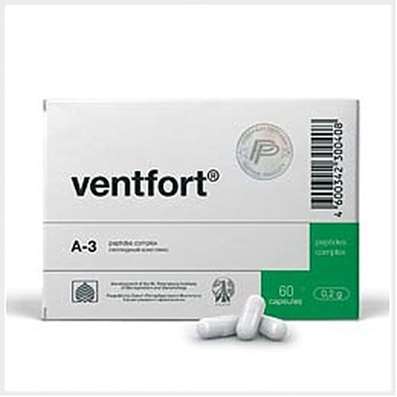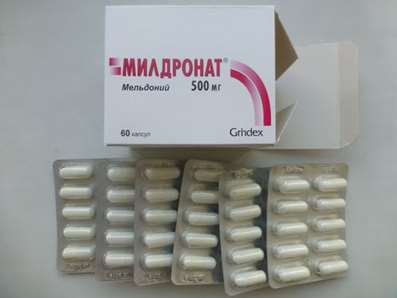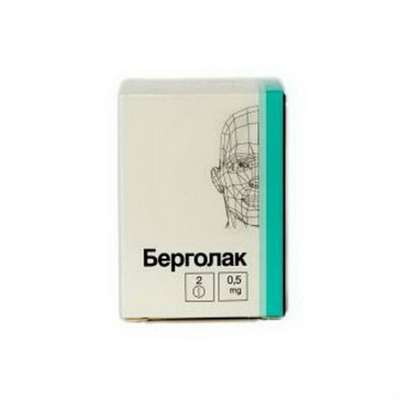Instruction for use: Finast
I want this, give me price
Active substance:
Finasteride
Indications
Treatment of benign prostatic hyperplasia and prevention of urological complications in order to reduce the risk of acute urinary retention, reduce the risk of the need for surgical interventions, incl. Transurethral resection of the prostate and prostatectomy.
Treatment to reduce the size of the enlarged prostate, improve urination and reduce the severity of symptoms associated with benign prostatic hyperplasia.
In combination with doxazosin - a decrease in the risk of progression of symptoms associated with benign prostatic hyperplasia.
Contraindications
Hypersensitivity to finasteride; Age to 18 years; Pregnancy and the use of finasteride in women of childbearing age (see "Application in pregnancy and lactation").
pregnancy and lactation
The use of finasteride is contraindicated in pregnancy and in women of childbearing age. In connection with the ability of inhibitors of 5-alpha-reductase type II inhibit the conversion of testosterone to DHT, drug data, incl. Finasteride, when used in pregnant women can cause anomalies in the development of the external genitalia in a male fetus.
Finasteride is not indicated for use in women.
There is no data on the excretion of finasteride with breast milk.
Small amounts of finasteride were found in the semen of patients receiving finasteride at a dose of 5 mg / day. Although clinical data on the effect of finasteride on the male fetus are not available, women of childbearing age should avoid contact with semen from men taking finasteride. Women of childbearing age and pregnant women should avoid contact with damaged tablets of finasteride, tk. Its ability to inhibit the conversion of testosterone to DHT may cause impaired development of the genital organs in the male fetus.
The action category for fetus by FDA is X.
Side effects
Adverse reactions to finasteride are classified according to the system-organ classes according to the MedDRA classification. The frequency of adverse reactions was determined according to the following gradation (WHO classification): very often (≥1 / 10); Often (≥1 / 100, <1/10); Infrequently (≥1 / 1000, <1/100); Rarely (≥1 / 10000, <1/1000); Very rarely (<1/10000), including individual messages; The frequency is unknown (it is not possible to determine the frequency, since the information was obtained on the basis of the post-marketing experience of applying finasteride).
Most often, patients experienced impotence and decreased libido, although the incidence of these side effects gradually decreased during treatment.
On the part of the immune system: the frequency is unknown - hypersensitivity reactions, incl. Angioedema (including swelling of the lips, face and throat).
From the side of the psyche: often - a decrease in libido; Frequency is unknown - depression, decreased libido, which persists after discontinuation of therapy.
From the heart: the frequency is unknown - a feeling of palpitations.
From the liver and biliary tract: the frequency is unknown - an increase in the activity of hepatic transaminases.
From the skin and subcutaneous tissues: infrequent - rash; Frequency unknown - hives, itching.
From the genitals and mammary glands: often - erectile dysfunction; Infrequently - a violation of ejaculation, an increase and soreness of the mammary glands; Frequency unknown - soreness of testicles, erectile dysfunction, persisting after discontinuation of therapy, male infertility and / or decreased quality of seminal fluid.
The MTOPS trial compared finasteride at a dose of 5 mg / day (n = 768), doxazosin at a dose of 4 or 8 mg / day (n = 756), a combination therapy with finasteride at a dose of 5 mg / day, and doxazosin at a dose of 4 or 8 Mg / day (n = 786) and placebo (n = 737). According to the results of this study, the safety profile and tolerability of combination therapy generally coincided with the profile of its individual components. The incidence of ejaculatory abnormalities in patients receiving combination therapy was comparable to the sum of the frequency of occurrence of this undesirable phenomenon against the background of two types of monotherapy.
A 7-year placebo-controlled study was conducted in which 18,882 healthy men participated. Data available for analysis of puncture biopsy of the prostate were obtained for 9060 subjects, with prostate cancer detected in 803 men (18.4%) receiving finasteride at a dose of 5 mg, and in 1147 men (24.4%), Who received a placebo. According to the results of a puncture biopsy, prostate cancer with a Gleason score of 7-10 was diagnosed in 280 men (6.4%) from the finasteride group at a dose of 5 mg, while in the placebo group, the cancer with this degree of differentiation was Was diagnosed in 237 patients (5.1%). The results of additional analysis suggested that an increase in the prevalence of low-grade prostate cancer observed in the finasteride group at a dose of 5 mg may be explained
A 7-year placebo-controlled study was conducted in which 18,882 healthy men participated. Data available for analysis of puncture biopsy of the prostate were obtained for 9060 subjects, with prostate cancer detected in 803 men (18.4%) receiving finasteride at a dose of 5 mg, and in 1147 men (24.4%), Who received a placebo. According to the results of a puncture biopsy, prostate cancer with a Gleason score of 7-10 was diagnosed in 280 men (6.4%) from the finasteride group at a dose of 5 mg, while in the placebo group, the cancer with this degree of differentiation was Was diagnosed in 237 patients (5.1%). The results of additional analysis indicated that the increase in the prevalence of low-grade prostate cancer observed in the finasteride group at a dose of 5 mg can be explained by a systematic error in evaluating the results associated with the effect of 5 mg finasteride therapy on the volume of the prostate gland. Of the total number of cases of prostate cancer diagnosed in this study, at the time of diagnosis, approximately 98% of cases were attributed to localized cancer (clinical stage T1 or T2). The clinical significance of data on the tumor process with a degree of differentiation of 7-10 points on the Gleason scale is unknown.
Laboratory indicators
When evaluating the results of laboratory studies, it should be borne in mind that in patients receiving finasteride treatment, the PSA content in the blood plasma decreases.
Most patients during the first months of therapy experienced a rapid decrease in the PSA index with its subsequent stabilization. The initial value of PSA, which is established after the treatment with finasteride, is approximately half of the corresponding index noted before the start of treatment. Thus, in patients treated with finasteride for 6 months or more, the value of PSA should be doubled compared to normal values in men who have not been treated.
There were no other differences in the values of standard laboratory parameters between the groups of patients receiving finasteride and placebo.
Precautionary measures
To avoid obstructive complications, careful monitoring of patients with a large volume of residual urine and / or a significantly difficult urination is necessary. Consider the possibility of the need for surgical intervention.
Influence on the content of PSA and diagnosis of prostate cancer
To date, the clinical benefits of finasteride have not been proven in patients with prostate cancer. In controlled clinical trials, patients with BPH and elevated plasma PSA concentrations were monitored for PSA and prostate biopsy results. It was found that the use of finasteride does not appear to change the incidence of prostate cancer detection and does not affect the frequency of its occurrence in patients taking finasteride or placebo. Before starting treatment and periodically during the treatment with finasteride, it is recommended to perform a rectal examination and apply other methods of diagnosis of prostate cancer. The determination of PSA in blood plasma is also used to detect prostate cancer. In general, the initial concentration of PSA above 10 ng / ml indicates the need for further examination of the patient and biopsy. When determining the concentration of PSA within 4-10 ng / ml, further examination of the patient is necessary. In men with BPH, normal values of PSA do not allow the exclusion of prostate cancer, regardless of the treatment with finasteride. The initial concentration of PSA below 4 ng / ml also does not exclude prostate cancer.
Finasteride causes a decrease in serum PSA concentration by approximately 50% in patients with BPH even in the presence of prostate cancer. This fact should be taken into account when evaluating the PSA content of patients with BPH receiving finasteride treatment, A decrease in the concentration of PSA does not exclude the presence of concomitant prostate cancer. This decrease is expected for any range of values of the PSA concentration, although it may differ for specific patients. Analysis of the PSA values in more than 3,000 patients in a 4-year, double-blind, placebo-controlled study PLESS confirmed that in patients taking finasteride for 6 months or more, the values of PSA should be doubled to be compared with the normal values of this parameter in patients not receiving treatment . This correction preserves the sensitivity and specificity of the PSA analysis and the possibility of detecting prostate cancer. Any persistent increase in PSA in patients receiving finasteride treatment requires a thorough examination to determine the cause, which may be the failure to adhere to the regimen.
Finasteride does not significantly reduce the percentage of free PSA (ratio of free PSA to total). This indicator remains constant even under the influence of the reception of finasteride. If the percentage of free PSA is used to diagnose prostate cancer, correction of the values of this indicator is not necessary.
Breast cancer in men
In clinical trials, as well as during the postmarketing period, men who received Finasteride were diagnosed with breast cancer. Physicians should instruct their patients to immediately report any changes in breast tissue, such as the appearance of seals, pain, gynecomastia or discharge from the nipples.
Special patient groups
Liver failure. There is insufficient clinical data on the use of finasteride in patients with hepatic insufficiency.
Renal insufficiency. In patients with various stages of renal failure (with a decrease in Cl creatinine to 9 ml / min), dose adjustment is not required, since special studies have not demonstrated any changes in the pharmacokinetic profile of finasteride.
Elderly age. Correction of doses is not required, although pharmacokinetic studies indicate that the excretion of finasteride in patients older than 70 years is somewhat reduced.
Influence on the ability to drive vehicles and mechanisms. The unfavorable influence of finasteride on the ability to drive vehicles and work with mechanisms was not reported.

 Cart
Cart





